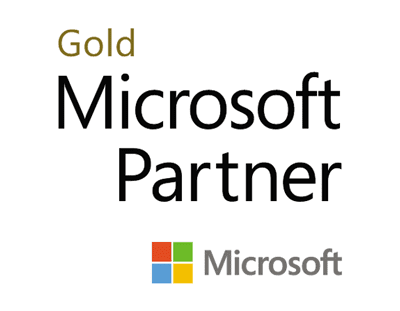AVEVA on Microsoft Azure Optimizes Organizational Operations with Predictive and Prescriptive Analytics.
The current pandemic has struck the oil and gas industry with reduced demand due to global lockdowns combined with oversupply resulting in a 20 percent imbalance and causing oil and gas prices to plunge to negative figures within weeks.
In the midst of growing economic and competitive pressures, industrial organizations today must make investments that optimize production, increase efficiency, and reduce OPEX. Industry 4.0 brings with it the digital technology and processes needed to transform industries worldwide, and these digital technologies bring the level of intelligence needed for businesses to align processes, optimize maintenance strategies, and maximize efficiency for the highest return on investment.
For industry 4.0 to truly succeed, businesses need connected technologies, machines, and systems to drive intelligence across their production processes, networks, and manufacturing value chains. Ultimately, industrial businesses want to work toward a connected factory that can essentially run and heal itself autonomously. But with so many technologies available today, it can be difficult to know where, when, and how to get started on implementing a strategy for industry 4.0.
True digital transformation can be achieved when companies shift their focus to invest in the technologies that will connect assets, people, and processes to create a holistic ecosystem that supports the overall enterprise strategy and objectives. One of the quickest paths to achieve improved efficiency, reliability, and profitability, is a robust asset performance management (APM) strategy that supports corporate objectives.
Paving the Way Toward Industry 4.0 With an Asset Performance Management Strategy That Considers Many Factors
When it comes to digital transformation, the emphasis has traditionally been siloed to productivity optimization, whereas a comprehensive strategy has often been absent. True digital transformation can only be achieved when businesses shift their focus away from investing in specific technologies that impact a small asset set or production line in a plant and toward an APM strategy that balances risk, cost, and performance of assets for maximum return on asset investment. The fact is innovation will simply fail if businesses don’t have the right strategy with the right processes and people to support it. Beyond asset performance, a successful APM strategy that supports digital transformation considers the safety and compliance requirements of any organization, resource management, and cost control measures to effectively deliver insights on the current state of the business so teams can proactively plan for future changes.
To get the most out of an APM strategy, organizations should take the following into account:
1. Risk-based Maintenance
One way to improve asset performance is to apply a risk-based approach to an asset management system your asset strategy. This helps optimize maintenance by providing a framework of prioritization of assets based on asset criticality. Risk-based maintenance helps plant management with decision making by prioritizing assets based on business risk. It facilitates a deep understanding of failure behavior and mitigating actions and helps prioritize build asset strategy in relation to company objectives like availability, costs reduction, safety, and compliance.
2. Data Optimization
Insights from data play the most important role in the strategic execution of an APM strategy. Productivity, safety, quality, compliance, and cost efficiency start with knowing the facts about current performance and identifying what improvements are needed to make the biggest impact on the bottom line. Understanding the criticality of assets, what deserves priority, and which can wait to be serviced can not only save maintenance time, but also improve the profitability needed to thrive in today’s increasingly competitive markets.
3. Workforce Empowerment
Technology is only as good as the people who leverage it. To ensure assets are operating optimally, employees must be empowered with the proper training and tools to derive the right insights to keep operations running smoothly. Capabilities such as augmented reality and virtual reality maintenance and safety training solutions are a good starting point for empowering personnel to get up to speed on the latest in maintenance and safety.
A strong asset strategy improves insight into operational performance to accelerate time to value, with less effort. This enables operators to analyze the effects of different asset management strategies, provides them with clear insight into both the consequences and benefits related to asset availability. By being able to accurately monitor and measure the performance lifecycle of an entire plant ecosystem, future factories can better inform operators by giving them the information needed to improve processes, maximize production, and further improve efficiency, all in real time.


“AVEVA’s solutions on the Microsoft platform are helping to drive measurable business outcomes in asset performance for our customers. Our portfolio enables a holistic approach to APM covering risk, reliability, efficiency, safety and workforce enablement – the combination of technology, processes and people capabilities is essential to success. We are looking forward to forging an even stronger partnership with Microsoft moving forward,” commented Ravi Gopinath, Chief Cloud Officer and Chief Product Officer, AVEVA.
Powering with Predictive Alerts
APM 4.0 applies predictive analytics to the time-series data to create meaningful, accurate, and specific indicators and alerts that enable decision-makers to influence the asset’s performance before a failure happens. Predictive analytics include the following three strategies to create alerts:
1. Condition Monitoring: Requiring basic implementation, condition monitoring involves taking one or more sensors, defining a meaningful indicator as an explicit function of the input, and setting a fixed threshold. Should the indicator breach this defined threshold, then it is considered indicative of a problem or failure, and an alert is triggered.
2. Anomaly Detection: This strategy requires Artificial Intelligence (AI) or, more specifically, machine learning technology. The algorithm learns a set of time-series training data that reflects the “normal” operation of the asset. The accuracy of the algorithm runs on a new collection of data to test if it can reliably pick up any anomalies. The significant advantage of this strategy is not having the need to define a mathematical function between the indicator and the sensors to monitor many different sensors simultaneously.
3. Failure Mode Prediction: The ultimate goal in predictive and prescriptive analytics is the accurate and reliable prediction of specific failure modes. It enables a precise preparation and a swift follow-up to solve the problem. The goal is achieved with monitoring fixed thresholds of sensors. This advanced method is an extension of the machine learning algorithm used to detect anomalies.
Add-on Prescriptive Analytics
The right APM 4.0 solution enables you to make prompt decisions on the prioritization and scheduling of alerts so that you can prepare tasks and ensure spare parts are available. By adding prescriptive analytics to the predicted signals, you maximize the benefits of APM 4.0 and successfully follow up with actions that will improve asset performance. Each triggered alert is linked to prescriptive actions that consist of four attributes:
1. Criticality: What is the financial impact of this predicted failure? The impact is the total effect of the event if the expected failure mode occurs, as defined in terms of financial loss.
2. Urgency: How much time do you have? Urgency is a reliable prediction of when the failure mode will occur once the indicator alarm is triggered.
3. Action: What action will you take? This attribute defines your ability to prepare for and respond to a triggered alert. It describes the tasks you need to execute and includes the required skills, tools, permits, work instructions, and safety of asset-need isolation.
4. Spare Part Management: Having the right spare part on hand determines whether or not a predicated failure can be avoided before it occurs.


“Microsoft and AVEVA have a long history of successful collaboration. With AVEVA APM 4.0 solution on Microsoft Azure, customers will benefit from the unique combination of Microsoft’s intelligent cloud and AVEVA deep knowledge to accelerate the sector’s digital and energy transformation,” said Darryl Willis, Vice President, Energy at Microsoft.
The End of Unplanned Downtime?
APM with Predictive and Prescriptive Analytics enables hydrocarbon producers and refiners to not only remotely monitor asset health, but also improve asset reliability by providing early warning notification and diagnosis of equipment issues days, weeks or months before failure. This helps reduce equipment downtime, increase availability, and improve performance while reducing operations and maintenance expenditures.
To learn more, visit www.aveva.com.
Mario Joao, Vice President of Global Alliance Partners at AVEVA, is an international business professional with 22 years’ experience creating and developing global revenue driven partnerships. A recognised professional focused on both traditional and emerging technologies including the Industrial Internet of Things(IIoT), Big Data and Analytics, Smart Cities, Digital Transformation, and building trust to enable greater value through facilitating alliance partnerships. Mario, an active member of The Association of Strategic Alliances Professionals community, holds an Engineering degree from Cardiff University, and a PhD from Westminster Business School.







